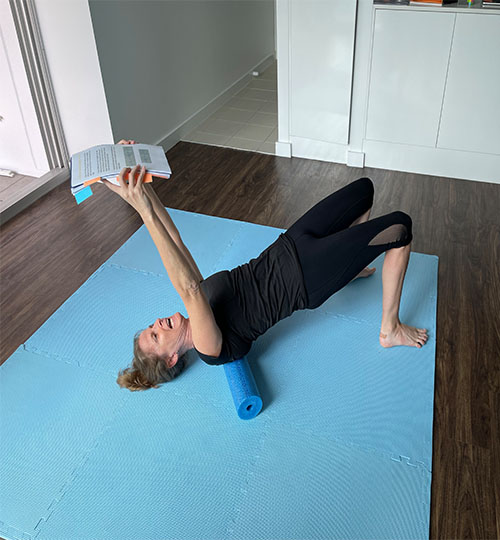Myofunctional VoiceGym
A full body integrated approach to improve your breathing speech and growth

The original Voice Gym program was developed by Angela Caine in the Uk in the late 1990’s. In the 2010’s, exercises based on speech therapy and sensory movement from the Dsmile program, developed by Hungarian based Speech and Language Pathologist Gabi Baracsy, were integrated into it resulting in the program’s current form, the Myofunctional Voice Gym. It is a fully integrated approach to breathing, swallowing, chewing, body posture and vocalisation.
The exercises help optimise the tone of the muscles involved in breathing as well as vocal production. This added tone encourages and enables nose breathing and correct tongue posture that helps stimulate the horizontal growth of the face and upper jaw in children, optimising not just room for the teeth, but also the development of space in the nasal cavity.
It helps strengthen and integrate full function in a tongue that has undergone a tongue tie release, allow you to integrate activities associated with developmental stages with a tongue that was previously unable to function correctly.
It is fantastic for those who’s jobs involve a lot of speaking, professional singers and toning your airway may help prevent the need for a CPAP device in those with breathing disordered sleep.
Your vocal cords form a part of your airway.
There is a reason we groan when we strain to lift a heavy object, why tennis players become grunters as they hit their hardest shots, and why we begin to make old people noises with movement as we age as our strength declines. These happen because our vocal cords form the top of our core, sealing off our airway, allowing us to brace our core and maximise our strength. Olympic gymnasts who spend a lot of time upside down have even been shown to have larger vocal cords than normal. Exercises that strengthen our vocal cords strengthen and open our airway, not just helping us to speak or sing, but also to breathe and move.


Normal myofunctional therapy focuses on the muscles of the face lips and tongue. Adding voice exercises to this helps us tone our airway and strengthen our core. We talk breathe laugh and sing in bodies that
move. Remembering to add the rest of the body to myofunctional exercises help us integrate everything together.
The Myofunctional VoiceGym works on the whole body. It incorporates exercises for retained reflex integration, core strength, body posture, airway, breathing and voice production at the same time as the muscles of the face lips and tongue are given a work out.
I currently run two levels of the MVG program.
The younger program is aimed at children aged 5-7 and runs for 10 weeks.
From the age of 8 children are able to complete the same program as that used by adults which is a 12 class series.
The program involves an hour class with me once week, with around 20-30 mins of homework to be done each day between classes.
With children it is often best to consider the MVG a school terms extra curricular activity to avoid overload.
The classes work best done in person, though remote classes via zoom can be organised.
Classes size is limited to 4.

